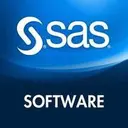In the digital age, where data reigns supreme, the quest for the perfect analytics tool can feel like a journey through a dense, uncharted jungle. On one side, we have SAS Visual Analytics, a veteran explorer with a map for every terrain, offering deep dives into the data wilderness. On the other side stands Heap, the agile pathfinder, swiftly navigating through user interactions with precision. But which guide will lead you to the promised land of actionable insights? Whether you’re charting unknown data territories or optimizing digital experiences with agility, this guide embarks on a quest to unveil “The Best Analytics Tool for You.”
| SAS Visual Analytics | Heap |
|---|---|
 |  |
| G2 Score -4.4 out of 5 | G2 Score -4.4 out of 5 |
| TrustRadius Score -8.4 out of 10 | TrustRadius Score -8.2 out of 10 |
Area of Comparison: User Interface and Accessibility
SAS Visual Analytics: The Complex Cartographer
SAS Visual Analytics offers a robust, feature-rich platform akin to a detailed cartographer’s dream. It’s designed for those who revel in the complexity of data, providing sophisticated tools for in-depth analysis, custom visualizations, and comprehensive data exploration. This platform is a haven for data scientists and analytics professionals seeking the freedom to perform intricate analyses and tailor their dashboards to reflect complex data landscapes.
However, the sophistication of SAS Visual Analytics comes with a steep learning curve. New users or those with limited technical backgrounds may find navigating its extensive capabilities daunting. Organizations typically need to invest in training to fully unlock the platform’s potential, making it more suited to enterprises with dedicated analytics teams.
Heap: The Intuitive Navigator
Heap, in contrast, presents a streamlined and intuitive interface, emphasizing ease of use and quick access to insights. Designed for agility, Heap allows marketers, product managers, and UX designers to effortlessly track user interactions and make data-driven decisions without wading through complex analytical processes. It’s the compass for those looking to understand and optimize digital experiences directly, with minimal setup and no need for extensive technical know-how.
Heap’s focus on automating data collection and providing accessible analytics tools ensures that actionable insights are just a few clicks away, enabling teams to rapidly implement changes and measure their impact on user behavior and product performance.
Pricing: SAS Visual Analytics vs Heap
Continuing our examination of SAS Visual Analytics and Heap, we arrive at an essential aspect that often plays a decisive role for organizations considering an analytics tool: Pricing. The cost of implementing and maintaining an analytics solution can significantly influence the decision-making process, especially when weighed against the platform’s capabilities and the value it promises to deliver. Let’s delve into the pricing models of SAS Visual Analytics and Heap to understand their market positioning and financial considerations.
SAS Visual Analytics: Tailored Enterprise Investment

SAS Visual Analytics embodies a customized approach to pricing, reflecting its stature as a comprehensive, enterprise-level solution designed for in-depth analytics across a broad spectrum of data challenges. The platform’s pricing is not one-size-fits-all but is instead tailored based on several factors, including the size of the deployment, the range of functionalities required, and the level of customer support needed. This bespoke pricing strategy ensures that organizations receive a solution perfectly fitted to their unique analytical needs and operational scale.
Given the sophisticated nature of SAS Visual Analytics, the investment required is typically substantial, aligning with its positioning as a premium analytics tool that offers extensive capabilities across various domains. Organizations interested in leveraging SAS Visual Analytics must engage directly with SAS representatives to obtain a customized quote, making it a significant consideration for businesses with the budget to support such a comprehensive analytics endeavor.
Heap: Flexible and Transparent Pricing

In contrast, Heap offers a transparent and flexible pricing structure aimed at businesses of varying sizes, from startups to large enterprises. The platform provides clear pricing tiers, available on its website, which scale based on usage — specifically, the number of sessions tracked. This transparent approach allows potential users to easily understand the investment required and select a plan that aligns with their business’s current needs and future growth.
Heap’s pricing model is designed to be accessible, offering a free tier for smaller businesses or those just starting with analytics, with the option to scale up as their data analytics needs grow. This scalability and transparency make Heap an attractive option for companies seeking a powerful yet cost-effective solution for tracking and analyzing user behavior.
Data Integration Capabilities
Continuing our exploration requires delving into another crucial aspect for any analytics tool: Data Integration Capabilities. The ease with which an analytics platform can gather, clean, and consolidate data from various sources directly impacts its effectiveness and the insights it can provide. Let’s examine how SAS Visual Analytics and Heap handle data integration, a fundamental step in transforming raw data into actionable insights.
SAS Visual Analytics: The Versatile Data Gatherer
SAS Visual Analytics is akin to a seasoned explorer, equipped with a wide array of tools to gather data from the most diverse and remote sources. It supports robust data integration capabilities, allowing organizations to bring together data from across different landscapes—be it databases, cloud services, spreadsheets, or even unstructured data from social media and web logs. This versatility ensures that users can create a comprehensive data foundation for their analyses.
For organizations dealing with vast and varied data sources, SAS Visual Analytics offers the capability to not just integrate but also to cleanse and prepare data, ensuring that analyses are based on accurate and reliable information. Its strength lies in its ability to handle complex ETL (Extract, Transform, Load) processes, making it an ideal choice for enterprises that require a holistic view of their operations.
Heap: The Automated Data Tracker
Heap takes a different approach, focusing on the automatic collection of user interaction data across websites and digital products. Its primary strength is in its ability to automatically track events and user actions without requiring manual setup for each event. This means that from the moment Heap is installed, it begins collecting comprehensive data on how users interact with a product, capturing clicks, form submissions, page views, and more.
This automated approach to data integration simplifies the process significantly for product teams and marketers, allowing them to focus on analyzing user behavior rather than worrying about data collection. While Heap’s automatic tracking is a powerful tool for digital analytics, organizations requiring integration with a wider variety of data sources might find it limiting compared to more versatile platforms.

Related: Check out our free SEO suite

Advanced Analytics and Machine Learning Capabilities
Advancing our exploration into the analytics showdown between SAS Visual Analytics and Heap, let’s pivot to a critical aspect that can significantly impact an organization’s analytics strategy: Advanced Analytics and Machine Learning Capabilities. In today’s fast-paced and data-driven world, the ability to predict future trends, automate insights, and understand complex patterns through advanced analytics and machine learning is a game-changer. Here’s how SAS Visual Analytics and Heap measure up in these advanced territories.
SAS Visual Analytics: The Deep-Dive Oracle
SAS Visual Analytics is akin to an all-seeing oracle in the realm of advanced analytics and machine learning, offering a depth and breadth of capabilities that are hard to match. It enables users to embark on sophisticated analytical explorations, including predictive modeling, forecasting, text analytics, and decision trees, among a plethora of other advanced statistical methods. Built on SAS’s powerful statistical foundation, this platform empowers organizations to not only interpret vast amounts of historical data but also to predict future trends and outcomes with a high degree of accuracy.
Ideal for enterprises with intricate analytical needs that span across multiple domains, SAS Visual Analytics offers a comprehensive suite of tools supporting data-driven decision-making. Its capabilities are especially beneficial for users with a robust background in data science, offering an expansive playground to extract predictive insights and actionable intelligence from their data.
Heap: The User Behavior Insight Generator
While Heap might not dive as deep into the statistical modeling ocean as SAS Visual Analytics, it offers a focused set of advanced analytics capabilities tailored to understanding and predicting user behavior. Heap’s strength lies in its ability to provide immediate, actionable insights through its automated event tracking and user segmentation features, facilitating the analysis of user interactions and the optimization of digital experiences.
Heap employs machine learning to help businesses identify trends, predict user actions, and automate insights based on user behavior data. This approach allows product teams, marketers, and UX designers to quickly leverage data insights to drive growth and improve user engagement without the need for deep statistical expertise.
Customer Support and Community Engagement
Diving deeper into our comparison, the next area we’ll explore is Customer Support and Community Engagement. The level and quality of support provided by an analytics tool, along with the strength and activity of its user community, can greatly influence both the immediate and long-term success of your analytics initiatives. These elements are vital for ensuring smooth operation, effective problem-solving, and continuous learning. Let’s assess how SAS Visual Analytics and Heap stand in these regards.
SAS Visual Analytics: Comprehensive Support Ecosystem
SAS Visual Analytics benefits from the extensive experience and resources of SAS Institute, offering a comprehensive support ecosyste. SAS provides a range of support services, including direct assistance from technical experts, ensuring users can resolve issues promptly and efficiently. SAS offers an abundance of learning materials, including tutorials, documentation, webinars, and training courses, catering to users at all levels of expertise.
The SAS community is vast and active, providing forums, special interest groups, and local user groups where individuals can share insights, ask questions, and learn from a broad network of peers. This level of support is invaluable, particularly for organizations leveraging analytics across complex and diverse data landscapes. It ensures that users can maximize the capabilities of SAS Visual Analytics and continuously advance their knowledge and skills.
Heap: Focused Support and Active Online Presence
Heap offers targeted support designed to meet the needs of digital businesses and product teams, with a strong emphasis on user behavior analytics. Heap’s support ecosystem includes timely and helpful customer support, ensuring users can quickly address any technical issues or questions that arise. A comprehensive and easily accessible online resource center, including guides, FAQs, and best practices, allows users to find answers and learn new tips and tricks independently.
While Heap’s user community might not be as large as SAS’s, it boasts an active presence on social media and specialized forums. Heap frequently engages with its user base through webinars, online workshops, and interactive Q&A sessions, fostering a sense of community and shared learning. Heap’s approach to support and community engagement is highly effective for digital-centric businesses that value quick, actionable assistance and opportunities for peer interaction and learning.
Conclusion
In wrapping up our comprehensive comparison between SAS Visual Analytics and Heap, we’ve journeyed through key facets that distinguish these analytics platforms. From their approach to data integration, user interface and accessibility, and advanced analytics capabilities, to pricing models and the critical aspects of customer support and community engagement, it’s clear each tool carves out its own path in the analytics landscape.
Thank you for joining this comparative exploration between SAS Visual Analytics and Heap. As you stand at the helm, ready to choose the analytics tool that will best serve your organization’s journey, remember that the most effective choice is the one that aligns with your unique needs and empowers your team to unlock actionable insights from your data.
READ NEXT:
- SAS Visual Analytics vs Kissmetrics: The Best Analytics Tool for You
- QlikView vs Kissmetrics: The Best Analytics Tool for You
- SugarCRM vs Vtiger: The Best CRM Tool for You
- 11 Marketing Analytics Tools to Elevate Your Data-Driven Strategies
- MicroStrategy vs Heap: The Best Analytics Tool for You
- 29+ Digital Analytics Software to Skyrocket Your Digital ROI
- 23 Tips to Perfect Your Outbound Prospecting Strategy





















Comments are closed.